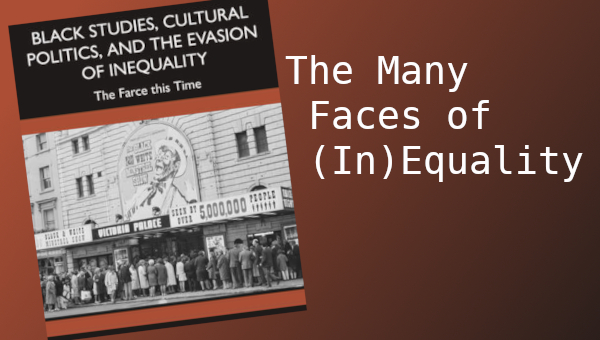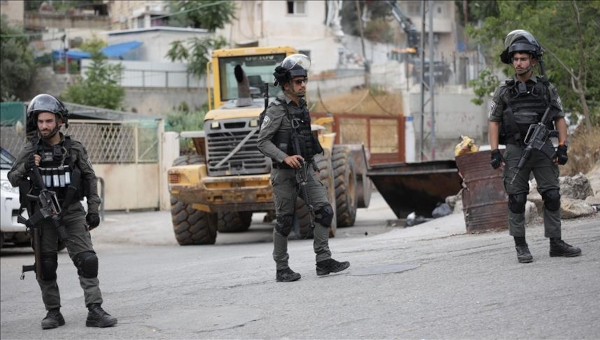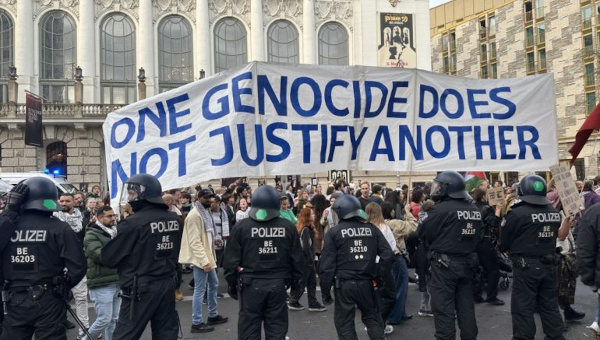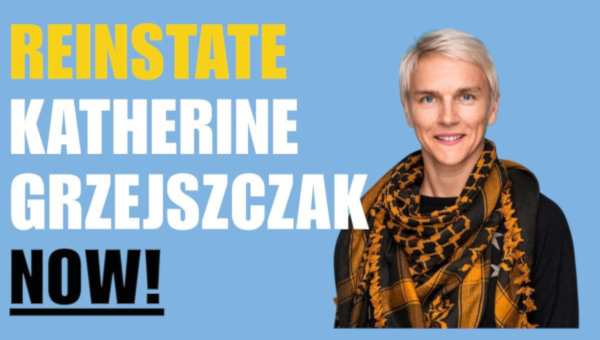Policing Toronto: Strip Searching in a Divided City
Strip searching is the name for a contemporary practice of police, carceral, and security institutions. It is a technique that affords officers total control over a person, akin to the unequal power dynamics of a sexual assault. The politics of its deployment is intertwined with the societal inequalities of class, race and gender. The critique of strip searching highlights the expansiveness of the police’s ability to exert oppressive control over people and resonates with broader political struggles over the coercive and punitive practices of policing in Canada.
In the case of Canadian policing, strip searching refers to when an arrested or detained person is compelled by police officers to expose their most intimate body areas. In this context, the strip search has been defined by the police as “the removal or rearrangement of some or all of the clothing of a person so as to permit a visual inspection of a person’s private areas, namely genitals, buttocks, breasts … or undergarments” (R. v. Golden, 2001 SCC 83). This definition was first published in Toronto Police Policy and Procedure Manual in 1999, and cited by the Supreme Court of Canada in Golden. It has now been widely adopted by Canadian courts and independent police oversight bodies as a conventional and justified method of police search.
Police-led strip searches are conducted in the absence of the consent of the searched person, under the supervision of the police, in police-controlled spaces. Categorically, it is the most extreme and intrusive form of search that the police can conduct without the assistance of a medical professional that is, a cavity search.
Just like any police power, the powers of strip searching cannot be meaningfully curtailed through reform. The vision and goal of dismantling and disarming the police and dismantling the powers they claim through the Canadian state through law (as well as deeply flawed forms of democratic accountability and community oversight), means calling for an end to strip searches rather than learning to tolerate them.
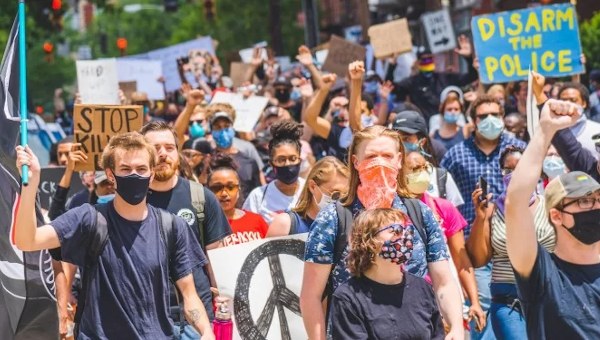
Toronto Police’s Excessive Strip Search Rate: A 20-year View
It is no coincidence that Toronto’s population has been uniquely subjected to this dehumanizing and degrading police technique, and certain identity groups more than others.
In the late 1990s, the Toronto police’s rapacious search for items – weapons, drugs, items that could assist in an escape, and items that could cause injury – had apparently brought the police to search every arrested person they opted to detain. Later, the Force adopted a profiling-based approach, which preserved the racist and classist overtones of the practice, but would extricate the Toronto police, for the most part, from the scandals involving police officers’ strip searching of lawyers (Mankin 2001), student activists (Toronto Police Service Board, February 26, 1998), and children (Toronto Police Service Board, July 29, 2004).
Black feminist activists, as well as nonprofit organizations, such as the Canadian Civil Liberties Association and Aboriginal Legal Services of Toronto, first drew attention to strip searches as the site of police brutality in the late 1990s. These community advocates were troubled by the idea that the police’s “safety” concerns, could consistently trump the human rights of the people detained by the police.
In June 2022, the Toronto police released its race-based data on strip searches. The recent race-based statistics on strip searches, as well as on the use of force, confirm the over-policing of Black people relative to the rest of the population. Even though Black people make up around 10 per cent of Toronto’s population, they made up one in every three people who were strip-searched. As well, nearly a third of all Indigenous people who were arrested were strip-searched.
This information-gathering initiative was informed by the review that the Ontario Independent Police Review Director (OIPRD), a police oversight body, conducted on police-led strip searches in Ontario, and especially by its recommendation arising from its 2019 Report, Breaking the Golden Rule: A Review of Police Strip Searches in Ontario, which called on the TPS to collect race-based data on strip searches.
As the Breaking the Golden Rule report showed, for some time, the Toronto police have been in a league of their own when it comes to strip searches. It found that the Toronto police had strip searched 37% to 43% of all arrestees between 2014 and 2016, whereas other large Ontario police forces reported strip-search rates of under 1% of people arrested. Though other police forces across Ontario were also on the hook for facilitating unjustified and illegal strip searches among their ranks, Toronto police stood out because of their frequent, rather than limited, use of the strip-search technique.
A factor affecting the Toronto police force’s high rate of strip searching is a proactive attitude toward the strip search, a holdover from the Force’s pre-2002 procedures which had called for the strip search of everyone who was booked or detained (Toronto Police Service Board, February 28, 2002). For the past 20 years, the Toronto police’s reformed approach had been strip searching every person detained in a police facility so long as there were ‘reasonable grounds’ to do so. Elsewhere in Ontario, neither of these systematic approaches to the strip search existed. In Toronto, this sensibility about strip searches survives.
The most recent race-based statistics indicate that in 2020, 22.2% of all the people arrested by Toronto police were strip searched, and that police divisions at the heart of the city were the most regular users of the strip search. Reflecting the fact that most strip searches initiated by Toronto police happen when the arrested people have been ‘booked’ into custody at police stations, we also know that 41.6% of bookings in 2020 involved a strip search.
Notably, this rate of search is not substantially different from when the Toronto Police Service (TPS) began collecting statistics on its rate of strip search in the late 90s and early 2000s. For instance, the first-ever statistics on the matter, released to the Toronto Police Service Board on December 14, 2000, reflect a strip search rate of 26% of arrestees.
The Toronto police force got ahead of the recent strip-search findings by changing its general approach to the strip search, in line with a new procedure, which it reported to its Board on November 24, 2020.
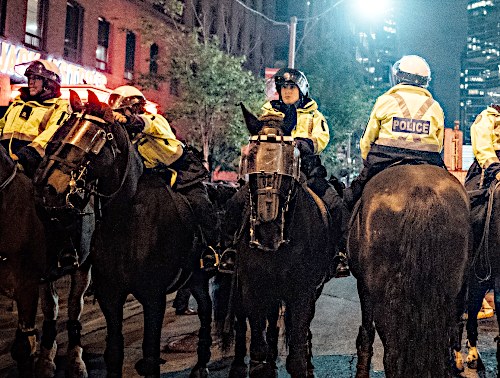
In the span of a year, from 2020 to 2021, the annual number of strip searches conducted by Toronto police officers went from 7,114 to 692. For 2021, which was a pandemic year, the TPS report that strip searches are now happening at a rate of roughly 2.1% of arrests across all populations, less than a tenth of the previous strip-search rate. As the 2021, numbers indicate that the strip-search rate for the Toronto police is still double that of other Ontario police forces.
Though the rate for the police’s strip search of Black people remains the strongest deviation from the norm, the rate at which Toronto police strip search Indigenous people is now consistent with the rate for the rest of the population.
Strip-Searching’s Abuses Are Persistent
No amount of regulation or oversight of the police can prevent the abuses wrought by strip searching from happening.
Several studies demonstrate the persistence of illegal and brutal strip searching by Canadian police. Most prominently, the OIPRD published a summary of 89 Ontario cases involving legally problematic strip searches from 2001 to 2019 as a supplement to their 2019 Report. In 2017, legal scholars Michelle Psutka and Elizabeth A. Sheehy’s drew attention to the persistent trend of the illegal strip searching of women. Similarly, the Toronto Star’s 2022 Investigative Report, “UnChartered Waters” also picked up on the Toronto police force’s inability to learn from past strip-search-related constitutional violations.
Though these studies do not come close to capturing the full scale of the problem, they serve as a point of reference for the systemic disregard that the police have toward their own rules about strip searching.
Case studies also provide insight into the Canadian state’s failure to keep police power in check.
The recent case of R. v. Black, 2020 ONSC 495, details the forcible strip search of a man by at least four Toronto police officers while he was shackled by his hands and legs. Police officers cut away Black’s clothing using a pair of scissors as he was lying prone on the floor, screaming. Following the search and while the man was still naked, several officers carried him back to a holding cell, in full view of video cameras. The judge in the case found nothing unreasonable about this strip search, and the Toronto police defended the legitimacy of this search at the January 27, 2022 meeting of the Toronto Police Service Board.
In another case, the SIU investigated a strip search as a source of potential criminal misconduct, also without a positive result. Its 2013 investigation examined evidence referred to it by an Ontario court that Toronto Police Constable Irwin Correa had subjected a young Black man to an
“…unlawful and humiliating strip search in a public place in daylight … The conduct of Officer Correa, in particular, was intimidating, overbearing and oppressive. Despite his denials I find he was in fact conducting a drug investigation from the outset. When Mr. Darteh denied having anything in possession, Officer Correa told him to lift his shirt. He then proceeded to pull down Mr. Darteh’s shorts and underwear. That constituted an egregious violation of s. 8 and s. 9 of the Charter.” (SIU, 2013-TSA-029 citing R. v. Darteh, 2013 ONSC 233, para. 58.)
The SIU granted that Correa was conducting a strip search, a potentially legitimate police activity set out in TPS Policy and Procedure, in an unacceptable manner but declined to charge the officer with criminal misconduct.
“While it would appear that Cst. Correa intended to embarrass the complainant by pulling his pants down, I am of the view that his actions, while deplorable, do not amount to an intrusive enough level of violation of Mr. Darteh’s sexual integrity to found a charge of sexual assault. There is no suggestion that his genitals were touched by any of them. All in all, I do not have reasonable grounds to believe that the actions of Cst. Correa amounted to a sexual assault even though he was actively engaged in humiliating Mr. Darteh.” (SIU, 2013-TSA-029)
As the case of Constable Correa shows us, there are limited opportunities to seek justice for an abusive strip search, let alone successfully. As the Black case indicates, courts also designate certain strip searches as legitimate, even when they violate common standards of decency.
Canadian Police’s Search Powers Are Categorically Excessive
In 2001, the Toronto police’s approach to the search was endorsed by the Supreme Court of Canada in the Golden case as a distinct type of search. Strip searches are a form of personal search that is considered generally authorized by law when police officers conduct them incidental to the arrest (and detention) of a person.
Because routine strip searches have been ruled out as unacceptable in R. v. Flintoff, 1998 632 ONCA, each individual strip search is judged on a case-by-case basis. A decisive influence on the legitimacy of a given search is whether it was conducted in a “reasonable manner”, a consideration that may be overridden if the court accepts that police officers faced “exigent circumstances” that prevented them from following best practices.
The legal framework around the Toronto police’s strip searches is informed by the common-law police power to search. The Department of Justice Working Paper Criminal Law: Police Powers – Search and Seizure in Criminal Law points out that the excessiveness of the search power is due to policing’s tyrannical roots, but that the police intensified their use of the search power during contemporary times in the war on drugs.
The Working Paper explains that the police’s common-law search power was informed historically by the tolerance that pre-legal society presumably once had for acts of unrestrained violence toward people accused of crimes. According to common-law theory, police violence predates and holds priority over legal concepts, such as rights, which were developed later.
Seen in this light, the concept of common-law police power is the seed of the law’s intrinsic deference toward the police’s excesses. As this foundational legal myth goes, the common law gives police the power to search – which means the power to strip search – whenever they see fit.
Police power categorically trumps the rights of the individual, let alone the community. In the eyes of the law, the police’s claim to their common-law powers precedes and takes precedent over any expectations we may have about being treated decently, even when those expectations are informed by a contemporary constitutional framework of rights and freedoms.
Canadian law permits the police to cause harm, so long as the police can make the case that they were acting reasonably. The Toronto police’s procedures on strip searching offer such a ‘reasonability’ framework to structure the legitimation of the practice.
Procedures Don’t Make Strip Searches More Humane
As the Toronto police’s history with the strip search demonstrates, police procedures can play a strong hand in shaping how police organizations in Canada conceptualize their legal powers such as arrest, search, and the use of force.
With regard to strip searching, procedures work to normalize the most extreme exercise of the police’s search power. They exist to make the strip search more palatable to the courts and other regulators and to the police officers that use them.
Whereas most people would hesitate to strip search another person without that person’s consent, the police present this operation to its employees as appropriate and normal. Police officialdom obfuscates away from the inhumanity and flat-out creepiness of invasive searches like the strip search, resulting in a kind of cognitive dissonance.
Take, for example, R. v. Bruce, 2018 ONCJ 135. In this case, when the accused, who had been arrested for drunk driving, was booked into police custody, the officer in charge determined that she would be strip searched by a female officer.
It came to light during the cross-examination of the searching officer, Cst. Carmen Wong, that Toronto’s police officers had been trained to conduct each strip search to its fullest extent in every single instance. Cst. Wong testified that she had not contemplated conducting the search in a less invasive manner, though, in theory, she had the discretion to do so. She had apparently never been advised, in training or on the job, that strip searches could be conducted any other way than through its most extreme iteration.
The accused, just like everyone else who is strip searched, was instructed by the searching officers to strip off each item of her clothing one at a time, and hand it to the officers, until half of her body was completely exposed. Then the officers instructed her to do the same thing with the other half of her clothes. Even undergarments were to come off in every case. It also came to light in this case that it had been routine practice for police officers to remove the underwire from every bra they inspected, which ruins the item of clothing. This custom continues, but it is no longer automatic.
Toronto police officers also routinely scrutinize the genitals of the people they strip search, as well requiring each person searched to show the bottoms of their feet, and inside their mouths, and to run their own hands through their hair. People with vulvas, like the accused in the Bruce case, are asked by officers to squat in order to allow any secreted items to fall out, and have their vulva inspected for any ‘obstructions’. Similarly, searching officers ask people with testicles to bend over to touch their feet and to manipulate their genitals so that officers can have a view of the anus and perineum.
While the procedure is clear that the gender of the searching officer must match the gender of the searched person, these acts remain unseemly, humiliating, and inhumane. The procedural niceties of the Toronto police’s systematic and clinical approach do not make these strip searches any less of an intrusion upon a person’s bodily autonomy. For the satisfaction of the police’s professional curiosity, countless people have been harmed.
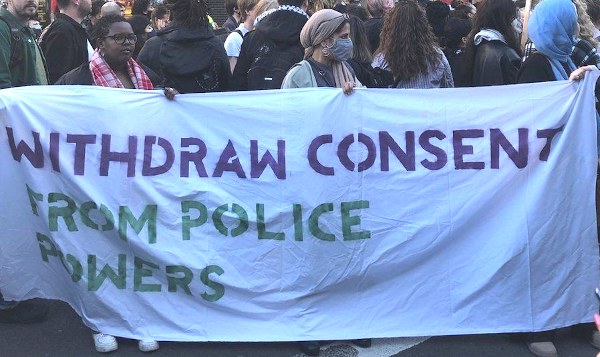
Conclusion
Despite the Supreme Court of Canada’s recognition of the fact that strip searches are intrinsically humiliating, degrading, and dehumanizing, and bring up racial and sexual trauma in the process, the Court remains unwilling to denounce the practice. The coercive authority of the police to conduct these searches, backed up by the law’s respect for the police’s imperative to search, leaves no room for a real respect for the rights and humanity of the searched person.
We now live with the knowledge that, for the past 20 years, Toronto’s police officers had been consistently strip searching about 40% of all detainees without correction. The Toronto police force’s approach to the strip search, for all this time, has been considered legally and procedurally sound.
It is an open and unanswered question as to why an oppressive and demeaning technique has been allowed to proliferate in the policing of the Toronto community specifically. It is also curious that such a dehumanizing technique has been permitted to come into such widespread use in contemporary society. Part of ending strip searching by the police means calling for its end in prisons as well.
Speaking from a feminist perspective that is critical of the violence of forced nudity and is especially sensitive to the violence that is exacerbated by the systemic injustice felt by certain bodies, it is unconscionable that a state-based practice of sexual assault is allowed to continue.
Now that the Toronto police force’s strip searches are such an open fact, it is time to speak up about how unacceptable this practice is. Pivoting from its earlier criticism of the Toronto police, the OIPRD has recently, as of a January 19, 2021 letter, encouraged all other police services in Ontario to synchronize their procedures with the ones recently developed by the Toronto police, a move which further normalizes strip searching in Canadian police culture.
It is pivotal that we resist the notion that strip searches are something that is accepted practice. A step toward breaking the disciplinary powers of the police, and the structural forms of power they protect and claim through the liberal democratic Canadian state, is the end of all strip searches. •
References
- Makin, Kirk. “Routine Strip Searches by Police Banned.” The Globe and Mail, December 7, 2001.
- Mendleson, Rachel and Steve Buist. “Illegal Strip Searches. Mishandled Evidence. Slapdash Raids. How Nine Canadian Police Forces Continued Flouting the Law despite Judges’ Warnings.” Toronto Star, June 9, 2022.
- Ontario Independent Police Review Director. “Breaking the Golden Rule: A Review of Police Strip Searches in Ontario.” Queen’s Printer for Ontario, 2020.
- Ontario Independent Police Review Director. “Summary of Ontario Jurisprudence Involving Strip Searches Post R. v. Golden.” Queen’s Printer for Ontario, 2020.
- Psutka, Michelle, and Elizabeth Sheehy. “Strip-Searching of Women in Canada: Wrongs and Rights.” Canadian Bar Review 94, no. 2 (2016): 241–80.
- R. v. Darteh, 2013 ONSC 233.
- R. v. Bruce, 2018 ONCJ 135.
- R. v. Golden, 2001 SCC 83.
- Special Investigations Unit. “News Release: SIU Concludes Strip Search Investigation in Toronto.” Online. Accessed June 28, 2022.
- Toronto Police Service. Toronto Police Policy and Procedure Manual, 1999.
- Toronto Police Service Board, “Post-Arrest Detention and Strip Searches.” Meeting Minutes of the Toronto Police Service Board. Toronto.February 26, 1998.
- Toronto Police Service Board, “Gathering Statistics in Relation to Complete Strip Searches.” Meeting Minutes of the Toronto Police Service Board. Toronto. December 14, 2000.
- Toronto Police Service Board, “Review of the Supreme Court of Canada Decision – Complete Searches (Searches of the Person).” Meeting Minutes of the Toronto Police Service Board. Toronto. February 28, 2002.
- Toronto Police Service Board, “Review of Search of Persons Policy.” Meeting Minutes of the Toronto Police Service Board. Toronto. July 29, 2004.
- Toronto Police Service Board, “Service’s Reform with Respect to Search of Persons.” Meeting Minutes of the Toronto Police Service Board. Toronto. November 24, 2020.
- Toronto Police Service Board, “Search of Persons Update.” Meeting Minutes of the Toronto Police Service Board. Toronto. January 27, 2022.


